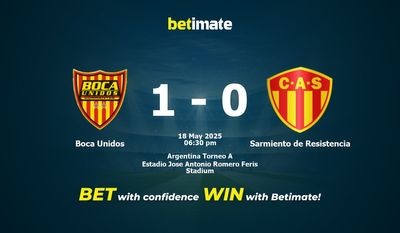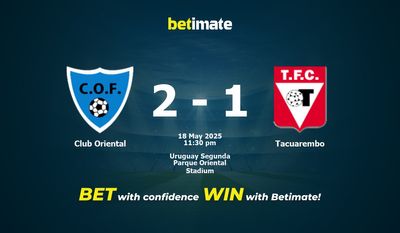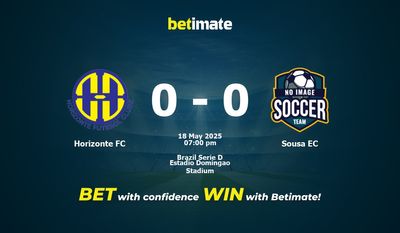Quick Betimate
Popular Leagues
-
UEFA Nations League
-
England (19)
- FA Cup
- Premier League (8)
- Championship (1)
- League 1 (1)
- League 2 (1)
- National League (2)
- National League North (1)
- National League South
- EFL Trophy
- Premier League 2
- Championship Women
- Development League 2 (1)
- FA Cup Women
- FA Trophy
- FA Vase
- Isthmian Division One North
- Isthmian Division One South
- Isthmian Premier Division
- National League Cup
- Northern League Division One
- Northern Premier League
- Reserve Matches
- Southern Premier League Central
- Southern Premier League South
- Super League Women
- U21 Premier League Cup
- Northern Ireland Championship
- Northern Ireland Championship Women
- Northern Ireland Cup
- Northern Ireland Intermediate Cup
- Northern Ireland League Cup Women
- Northern Ireland Play-Offs
- Northern Ireland Premier
- Northern Ireland Premier Intermediate League
- Northern Ireland Premier League Women (4)
- Northern Ireland Reserve League
- Scotland Regional Cup
- Wales League Cup Women
-
Japan J-League Cup (7)
-
UEFA Champions League (1)
-
Spain (92)
- La Liga (10)
- Segunda (4)
- Tercera Group 1 (2)
- Tercera Group 2 (2)
- Tercera Group 3 (2)
- Tercera Group 4 (2)
- Tercera Group 5 (2)
- Tercera Group 6 (2)
- Tercera Group 7 (2)
- Tercera Group 8 (2)
- Tercera Group 9 (2)
- Tercera Group 10 (2)
- Tercera Group 11 (2)
- Tercera Group 12 (2)
- Tercera Group 13 (2)
- Tercera Group 14 (2)
- Tercera Group 15 (2)
- Tercera Group 16 (3)
- Tercera Group 17 (2)
- Tercera Group 18 (2)
- Youth League
- Copa De La Reina (1)
- Copa del Rey
- Kings League - 40 mins play (1)
- Primera Division RFEF Group 1 (10)
- Primera Division RFEF Group 2 (10)
- Primera Federacion Women (1)
- Primera Women
- Queens League - 40 mins play
- Regional Cup
- Regional League
- Segunda Division RFEF Group 1
- Segunda Division RFEF Group 2
- Segunda Division RFEF Group 3
- Segunda Division RFEF Group 4
- Segunda Division RFEF Group 5
- Segunda Division RFEF Play-Offs (5)
- Segunda Federacion Women
- Tercera - Play-Offs (13)
- Tercera Federacion Women
- Women Regional League
-
USA (795)
-
UEFA Europa League (1)
-
Germany (50)
- Bundesliga I
- Bundesliga II
- DFB Pokal (1)
- Regionalliga Bayern
- Regionalliga North
- Regionalliga North East
- Regionalliga South West
- Regionalliga West
- Oberliga Baden-Wuerttemberg (9)
- Oberliga Bayern North
- Oberliga Bayern South
- Oberliga Bremen
- Oberliga Hamburg
- Oberliga Hessen (1)
- Oberliga Mittelrhein (5)
- Oberliga Niederrhein (8)
- Oberliga Niedersachsen
- Oberliga NOFV Nord (8)
- Oberliga NOFV Sud (8)
- Oberliga Rheinland-Pfalz/Saar (5)
- Oberliga Schleswig-Holstein
- Oberliga Westfalen (4)
- 3. Liga
- Bundesliga II Play-Offs
- Bundesliga II Women
- Bundesliga Play-Offs
- Bundesliga U19
- Bundesliga Women
- DFB Pokal Women
- Regionalliga Play-Offs
- U19 Cup (1)
-
Italy (28)
- Serie A (9)
- Serie B (1)
- Serie C Group A
- Serie C Group B
- Serie C Group C
- Campionato Nazionale
- Campionato Primavera 1
- Campionato Primavera 2 (2)
- Serie D
- Coppa Italia
- Coppa Italia Women
- Campionato Primavera 3
- Campionato Primavera 4
- Serie A Women
- Serie B Play-Offs (4)
- Serie B Women
- Serie C Play-Offs (4)
- Serie C Super Cup
- Serie D Play-Offs (8)
- U19 League Women
-
France (4)
-
Netherlands (16)
-
Scotland (1)
-
Japan J-League (2)
-
Cyprus Division 1 (3)
-
Israel Premier League (2)
-
Colombia Primera A (5)
-
Colombia Primera B (7)
-
Denmark Superligaen (3)
-
Lebanon League (5)
-
Esport (63)
Other Leagues
-
Albania
-
Algeria (5)
-
Andorra (1)
-
Angola (4)
-
Argentina (80)
- Nacional B (10)
- Primera B Metropolitana (7)
- Primera C Metropolitana (11)
- Reserve League
- Cup (11)
- Torneo A (15)
- Copa Santa Fe
- Championship Women (7)
- Copa de la Liga Profesional
- Copa Santa Fe Women
- Liga Profesional (4)
- Liga Profesional Reserves (15)
- Nacional Reserve League
- Regional League
- Youth League
-
Armenia (7)
-
Aruba (3)
-
Australia (119)
- A-League (2)
- A-League Women
- Capital Territory NPL2 (4)
- Capital Territory NPL2 U23 League
- Capital Territory Premier League (4)
- Capital Territory Premier League Women
- Capital Territory Premier League Women Reserves
- Capital Territory U23 League
- Cup
- Cup Qualifying
- Darwin Premier League
- FFA Cup Qualifying
- New South Wales League 1 (8)
- New South Wales League 2
- New South Wales NPL Women (7)
- New South Wales NPL2 Women
- New South Wales Premier League (8)
- New South Wales U20 League (1)
- Northern NSW Division 1 (1)
- Northern NSW Premier League (2)
- Northern NSW Premier League Women
- Northern NSW Reserves League
- NPL Queensland (6)
- NPL Queensland U23
- NPL Queensland Women (5)
- NPL Victoria (7)
- NPL Victoria U23 (1)
- NPL Victoria Women (6)
- NSW League 1 U20
- NSW League 2 U20
- Queensland PL 2 U23
- Queensland PL U23
- Queensland Premier League (6)
- Queensland Premier League 2 (6)
- Queensland Premier League 2 Women
- Queensland Premier League 3
- Queensland Premier League 4
- Queensland Premier League Women
- SA Premier League Reserves
- SA Premier League Women (5)
- SA Premier League Women Reserves
- South Australia Premier League (6)
- South Australia State League 1 (6)
- South Australia State League Reserves
- Sunday League Premier Division
- Sunday League Premier Division Reserve
- Tasmania Championship (4)
- Tasmania Championship 1
- Tasmania Championship Women
- Tasmania NPL U21 League
- Tasmania Premier League (4)
- Tasmania South Division 1
- Tasmania Super League Women
- Victoria PL 1 U23
- Victoria Premier League 1 (7)
- Victoria Premier League 2
- Victoria Premier League Women
- Victoria State League 1
- Victoria State League 1 Reserves
- Victoria State League 2
- Victoria State League 2 Reserves
- WA Premier League Women (1)
- WA Premier League Women U21
- WA State Cup Women
- WA State League 1 Reserves
- Western Australia Premier League (6)
- Western Australia State League 1 (6)
- Western Australia State League 1 Women
- Western Australia State League 2
- Western Australia U23 League
- Australian Matches
-
Austria (29)
-
Azerbaijan (8)
-
Bahrain
-
Bangladesh (5)
-
Barbados (2)
-
Belarus (5)
-
Belgium (3)
-
Benin
-
Bhutan
-
Bolivia (14)
-
Bosnia & Herzegovina (11)
-
Botswana (8)
-
Brazil (164)
- Serie A (7)
- Serie B (5)
- Serie C (6)
- Campeonato Amapaense
- Campeonato Baiano 2 (3)
- Campeonato Brasileiro A2 Women (3)
- Campeonato Brasileiro Serie B U20 (4)
- Campeonato Carioca A2 (1)
- Campeonato Carioca B (6)
- Campeonato Goiano 2 (4)
- Campeonato Maranhense
- Campeonato Mineiro 2 (6)
- Campeonato Mineiro U20 (3)
- Campeonato Paranaense 2 (2)
- Campeonato Paulista A4
- Campeonato Paulista U20 (3)
- Catarinense 2 (4)
- Copa Espirito Santo (6)
- Copa Nordeste (4)
- Copa Rio Women
- Copa Verde
- Matches
- Matches Women
- Paraense
- Paulista Cup (11)
- Paulista Serie B (5)
- Paulista Women (4)
- Serie A U20 (10)
- Serie A1 Women (5)
- Serie A2 Women (1)
- Serie A3 Women (12)
- Serie D (20)
- U20 Cup
- U20 League (13)
- U20 Women Cup
- Copa do Brasil (16)
- Women’s Friendly
-
Bulgaria (6)
-
Burkina Faso
-
Burundi
-
Cambodia
-
Cameroon (8)
-
Canada (8)
-
Chile (12)
-
China (49)
-
Colombia (18)
-
Costa Rica (4)
-
Côte d’Ivoire (8)
-
Croatia (19)
-
Cuba
-
Cyprus (3)
-
Czech Republic (38)
-
Denmark (48)
-
Djibouti
-
Dominica (2)
-
Dominican Republic
-
Ecuador (15)
-
Egypt (16)
-
El Salvador (2)
-
Estonia (10)
-
Ethiopia (3)
-
Faroe Islands (12)
-
Fiji
-
Finland (90)
-
Gambia (7)
-
Georgia (10)
-
Ghana (8)
-
Gibraltar
-
Greece (2)
-
Guatemala (3)
-
Haiti (5)
-
Honduras (2)
-
Hong Kong SAR China (5)
-
Hungary (23)
-
Iceland (35)
-
India (1)
-
Indonesia (9)
-
Iran (11)
-
Iraq (10)
-
Ireland (13)
- Republic of Ireland FAI Cup
- Republic of Ireland FAI Intermediate Cup
- Republic of Ireland First Division (5)
- Republic of Ireland Leinster Senior Cup
- Republic of Ireland Leinster Senior League
- Republic of Ireland Munster Senior League
- Republic of Ireland National League Women (6)
- Republic of Ireland Premier Division (2)
- Republic of Ireland U20 League
-
Israel (11)
-
Jamaica (2)
-
Japan (67)
-
Jordan
-
Kazakhstan (10)
-
Kenya (2)
-
Kuwait (5)
-
Kyrgyzstan
-
Latvia (7)
-
Lebanon (5)
-
Liechtenstein (1)
-
Lithuania (18)
-
Luxembourg (17)
-
Macau SAR China
-
Macedonia (11)
-
Malawi (11)
-
Malaysia
-
Mali (5)
-
Malta (1)
-
Mauritania (2)
-
Mexico (7)
-
Moldova (6)
-
Mongolia
-
Montenegro (10)
-
Morocco (9)
-
Mozambique
-
Myanmar (Burma)
-
Namibia
-
Nepal
-
New Zealand (16)
-
Nicaragua (1)
-
Niger
-
Nigeria (10)
-
Norway (99)
- Eliteserien (8)
- Division 1 (8)
- Cup (8)
- Cup Women (8)
- Division 1 Play-Offs
- Division 1 Women (6)
- Division 2 Group 1 (7)
- Division 2 Group 2 (7)
- Division 2 Group 3
- Division 3 Group 1 (7)
- Division 3 Group 2 (7)
- Division 3 Group 3 (7)
- Division 3 Group 4 (7)
- Division 3 Group 5 (7)
- Division 3 Group 6 (7)
- Interkretsserie U19
- Toppserien Women (5)
- U19 Elite League
- Youth Cup
-
Oman (1)
-
Panama (3)
-
Paraguay (15)
-
Peru (16)
-
Philippines
-
Poland (30)
-
Portugal (7)
-
Puerto Rico (1)
-
Qatar
-
Romania (33)
-
Russia (19)
-
Rwanda (2)
-
Saint Kitts and Nevis (1)
-
San Marino (1)
-
Saudi Arabia (20)
-
Senegal (6)
-
Serbia (11)
-
Seychelles
-
Sierra Leone (3)
-
Singapore (4)
-
Slovakia (14)
-
Slovenia (8)
-
Solomon Islands
-
South Africa (1)
-
South Korea (24)
-
Suriname (1)
-
Sweden (49)
- Europe Friendlies
- Allsvenskan Qualification
- Superettan Qualification
- 1.div Norra (2)
- Cup (1)
- 1.div Södra (2)
- 2.div Norra Götaland (1)
- 2.div Norra Svealand (1)
- 2.div Norrland (2)
- 2.div Södra Götaland (2)
- 2.div Södra Svealand (3)
- 2.div Västra Götaland (1)
- Allsvenskan (7)
- Cup Qualification (6)
- Cup Women (1)
- Damallsvenskan (1)
- Div 1 Relegation (8)
- Elitettan (2)
- Juniorallsvenskan (7)
- Superettan (2)
-
Switzerland (18)
-
Taiwan
-
Tajikistan
-
Tanzania (8)
-
Thailand (2)
-
Togo (4)
-
Trinidad and Tobago (2)
-
Tunisia (17)
-
Turkey (27)
-
Uganda (1)
-
Ukraine (17)
-
United Arab Emirates (14)
-
Uruguay (28)
-
Uzbekistan (8)
-
Venezuela (12)
-
Vietnam (10)
-
Wales (1)
-
Zambia
-
Zimbabwe
The Mystery Unveiled: The Secrets Behind Footballers Holes In Socks

In the realm of professional football, players have various pieces of attire that serve both functional and symbolic purposes. From the iconic jerseys representing their teams to the boots engineered for optimal performance, each element plays a vital role. Among these, socks hold a unique significance. They not only provide protection and support but also contribute to the overall aesthetic appeal of the uniform.
Observant fans and keen-eyed spectators have often noticed footballers with unconventional sock arrangements, featuring deliberate holes cut into the fabric. This peculiar practice has sparked curiosity and speculation among enthusiasts worldwide. Why would these highly skilled athletes intentionally modify their socks, which are essential for their comfort and performance?
This article aims to delve into the motivations that drive players to wear football socks with holes. By examining various factors, we seek to uncover the underlying reasons behind this intriguing phenomenon. Let us explore the multiple reasons why do footballers cut holes in their socks.
Historical Background of Football Socks
Evolution of football socks from early designs to modern-day materials
Football socks have come a long way since the early days of the sport. The evolution of football socks can be traced back to the late 19th century when players would wear long, cotton or woollen socks that offered minimal protection and support. At that time, it was difficult for fans, officials, and even players to differentiate between teams on the field due to the lack of distinct colors and designs.
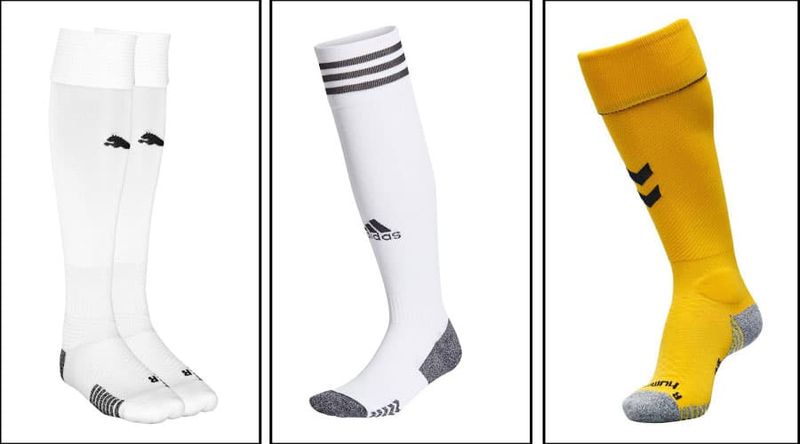
Football socks have come a long way since the early days of the sport
In the 1870s, standard strips were introduced, and teams began adopting colored and patterned flannelette shirts as part of their kit. This change led to the abandonment of trousers in favor of knickerbockers, which were loose trousers gathered at or just below the knee. Players also started wearing shin pads to protect their shins during the game.
However, the evolution of football socks did not gain significant momentum until recent times. Today, football socks are made from advanced materials such as nylon, polyester, and spandex blends. These materials offer better durability, elasticity, and moisture-wicking properties, ensuring maximum comfort and performance for the players.
Importance of socks in providing support, comfort, and protection to players' feet
Socks play a crucial role in providing support, comfort, and protection to the players' feet during a football match. They serve as a barrier between the foot and the football boots, preventing friction and blisters. The right pair of socks can significantly enhance a player's performance and overall experience on the field.
Modern football socks are designed with advanced features to cater to the specific needs of players. They are often cushioned at key impact zones, such as the heel and toe, to provide extra padding and shock absorption. This helps reduce the risk of foot injuries and provides added comfort during intense gameplay.
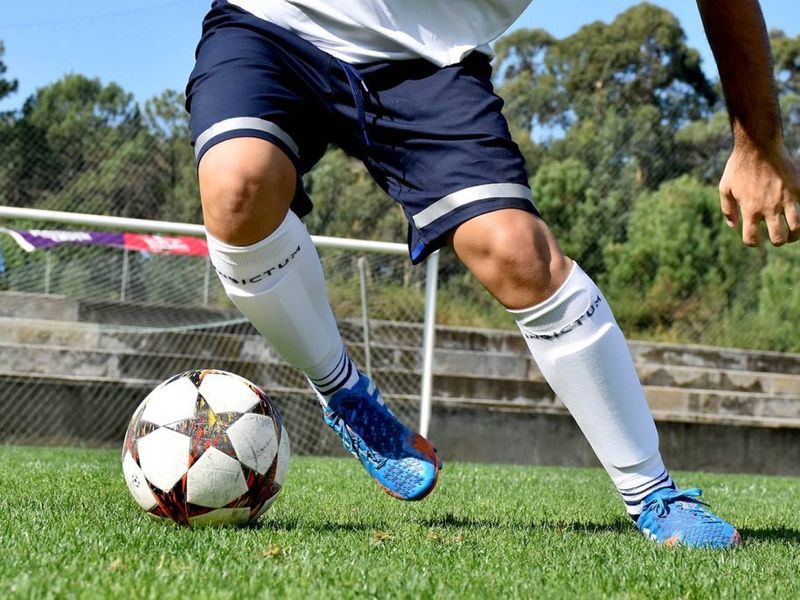
Socks play a crucial role in providing support, comfort, and protection to the players' feet during a football match
Furthermore, football socks are engineered with moisture-wicking properties that help keep the feet dry and cool. This is particularly important as excessive moisture can lead to discomfort, blisters, and an increased risk of fungal infections.
Additionally, football socks are designed to offer a snug fit and compression around the foot and calf. This compression helps improve blood circulation, reduces muscle fatigue, and provides support to the muscles and tendons, enhancing overall stability and performance on the field.
Transition from traditional knee-length socks to shorter variations
The transition from traditional knee-length socks to shorter variations in football is largely influenced by fashion trends and the desire for increased mobility and freedom of movement. In recent years, many professional players have been seen wearing shorter socks that end just below the knee or even lower on the calf.
Shorter socks have become popular among players due to their lightweight construction and improved breathability. They allow for better ventilation, preventing the accumulation of heat and sweat around the lower leg. Additionally, shorter socks offer a modern and sleek look, aligning with contemporary football aesthetics.
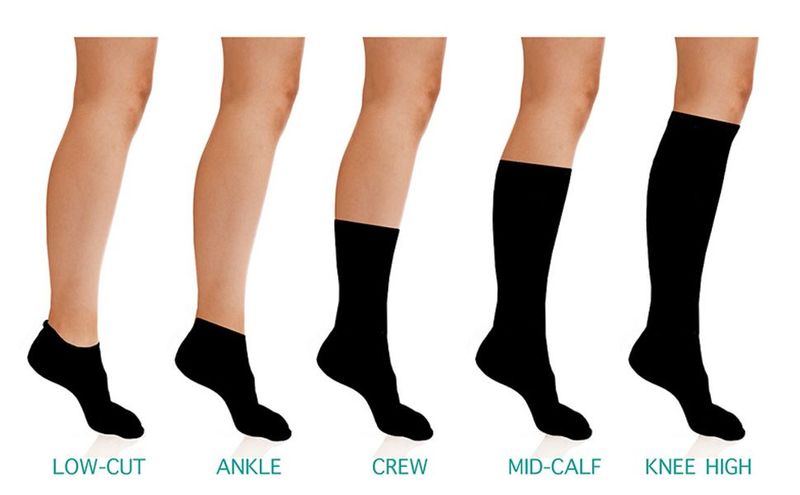
Transition from traditional knee-length socks to shorter variations
The transition to shorter socks also aligns with advancements in football boot design. Many modern boots are designed to provide a snug fit and offer ankle support, reducing the need for knee-length socks for additional stability.
However, it's important to note that the choice of sock length is largely a matter of personal preference for players. Some still prefer the traditional knee-length socks for various reasons, including tradition, personal comfort, or team uniform requirements.
The historical background of football socks reveals their evolution from early designs to modern-day materials. Football socks have transitioned from basic cotton or woollen socks to advanced blends of nylon, polyester, and spandex. These socks play a vital role in providing support, comfort, and protection to players' feet, offering features such as cushioning, moisture-wicking, and compression.
The transition from knee-length socks to shorter variations reflects fashion trends and the desire for increased mobility. Whether players choose knee-length, shorter socks or even football socks with holes, the importance of these garments in football cannot be overstated.
Why do footballers cut holes in their socks: An Explanation
Players are often seen footabllers holes in socks during matches, raising the question of why they adopt this practice.
Improved Breathability and Temperature Regulation
Football socks are primarily made of nylon, a tight plastic material that takes time to stretch out. When fresh out of the packet, they fit snugly on the calf, potentially restricting circulation and causing cramping and muscle tightness. By wearing football socks with holes around the widest points of the calves, footballers aim to alleviate the pressure and enhance air circulation.
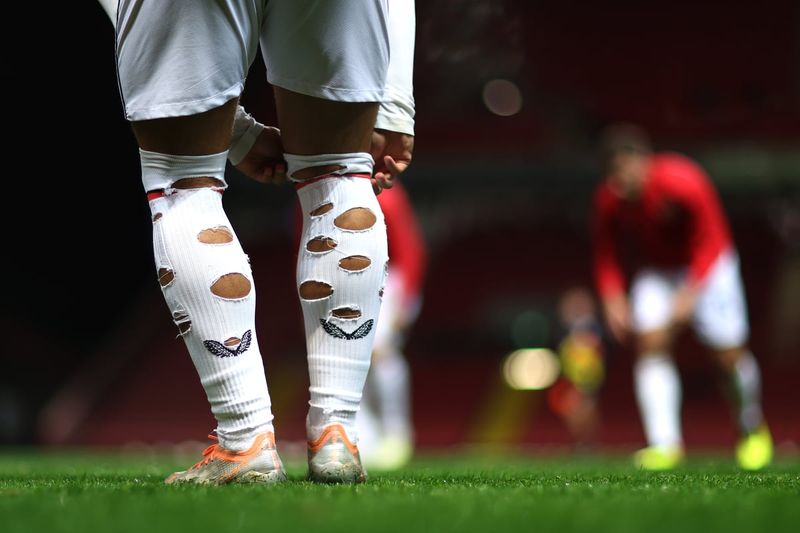
Cutting holes in socks help improve breath ability and temperature regulation
The form-fitting nature of socks can impede effective blood flow and hinder breathability. Customizing the socks by cutting holes allows for increased ventilation, which helps in preventing excessive sweating and reducing discomfort. By improving breathability, footballers can maintain optimal temperature regulation during intense physical activity, enhancing their performance on the field.
Injury Prevention and Rehabilitation
Footballers often face injuries or require medical attention during matches. By cutting football holes in socks, they create space to accommodate bandages, wraps, or other medical devices that aid in injury prevention and rehabilitation. This customization allows them to continue playing while receiving the necessary support for their injuries.
Football is a physically demanding sport that exposes players to various injuries. Ankles sprains, calf strains, and Achilles tendonitis are common among footballers. Customized football socks with holes provide a practical solution by allowing the injured area to receive proper support and treatment while ensuring the player can continue participating in the game.
Superstitions and Rituals
Superstitions and rituals is also one of the reasons why do footballers cut holes in their socks. Footballers, like many athletes, have their own set of superstitions and rituals that they believe bring them luck or enhance their performance. Cutting football holes in socks may be one such ritualistic act, believed to bring good fortune or ward off negative energies.
Prevention of Blisters and Moisture
Intense physical activity and prolonged use of football boots can lead to excessive sweating and the formation of blisters on the feet. By strategically cutting holes in specific areas of their socks, footballers aim to alleviate friction, improve ventilation, and reduce the chances of blisters and discomfort.
Customization and Individuality
Footballers often strive to express their individuality and personal style through their attire. Cutting football socks with holes allow them to personalize their uniform subtly, distinguishing themselves from their teammates and showcasing their unique fashion choices.
Practicality and Quick Fix
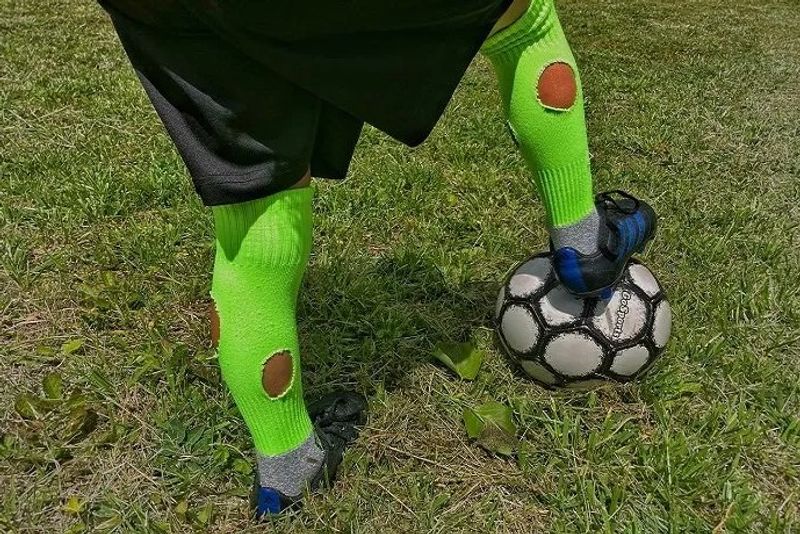
Cutting holes becomes a quick fix, enabling players to continue playing without interruption
In the fast-paced world of professional football, players encounter various challenges on the field. When faced with a torn sock during a match, cutting football holes in socks becomes a quick fix, enabling them to continue playing without interruption. This practical solution saves time and prevents the need for an immediate sock replacement.
Aesthetic Appeal and Trendsetting
Footballers are influential figures in the realm of fashion, often setting trends both on and off the field. By cutting holes in their socks, they can create a distinct visual appeal, garner attention, and inspire fans to emulate their style.
Psychological Edge and Mind Games
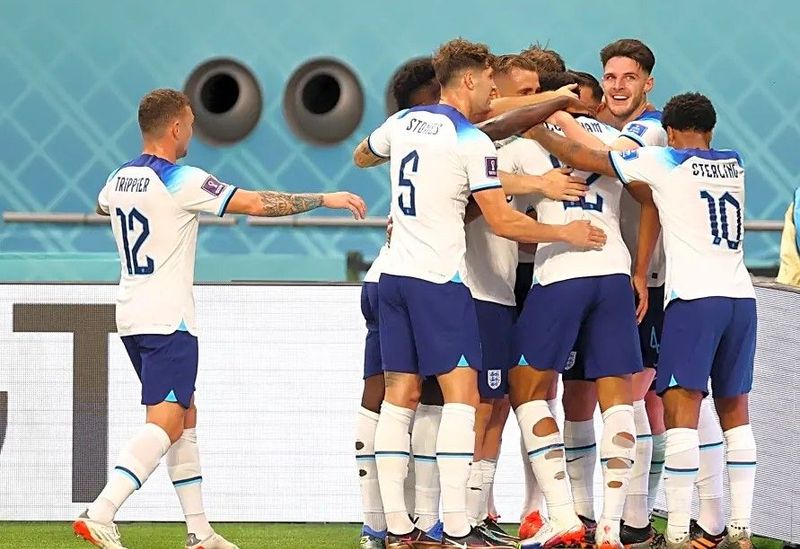
Cutting holes also help players affect opponent's psychology
Psychological Edge and Mind Games is the next factors that explain why do footballers cut holes in their socks. Footballers may engage in sock-cutting as a psychological tactic to distract opponents or create a sense of intimidation. The unconventional appearance of the socks may unsettle opposing players, providing a subtle advantage during crucial moments of the game.
Performance-Enhancing Beliefs
Some footballers believe that cutting football holes in socks can enhance their performance on the field. While this belief may not have a scientific basis, the power of perception and self-confidence should not be underestimated. By engaging in this practice, they may experience a placebo effect, leading to a heightened sense of ability and performance.
Cultural Influences and Traditions
Football is a global sport, with players hailing from diverse cultural backgrounds. Footballers holes in socks may stem from cultural influences or traditions specific to certain regions or teams. Embracing these practices allows players to pay homage to their heritage and maintain a connection to their roots.
Inherited Practices and Team Bonding
Within football teams, practices and rituals often pass down from generation to generation. Cutting football holes in socks may be a tradition that has endured over time, linking players of different eras and fostering a sense of camaraderie and unity within the team.
Adaptive Measures for Specific Playing Styles

Cutting holes has advanatge in adaptive measures for specific playing styles
Different football players adopt varying playing styles. Some players rely on agility and swift footwork, while others emphasize power and strength. Cutting holes in socks may serve as an adaptive measure for players who require additional flexibility or ventilation to support their unique playing styles.
Cutting football holes in socks has become a unique characteristic of football culture, providing practical benefits and personal significance to the players. The practice of footballers cutting holes in their socks serves multiple purposes. It improves breathability and temperature regulation by enhancing air circulation and preventing excessive sweating. Additionally, it allows for injury prevention and rehabilitation by accommodating bandages, wraps, or medical devices. Personal preferences and superstitions also play a role, with some players finding comfort or attributing luck to this customization.
Famous Footballers and Their Sock Modifications
Jude Bellingham
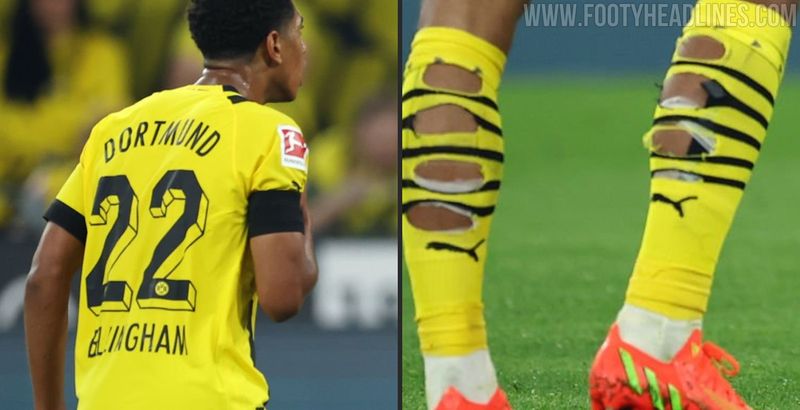
Jude Bellingham cut holes in his socks
Jude Bellingham, the talented English midfielder, has made waves with his impressive performances. Bellingham's socks were not just worn out, but they had a total of four significant football holes in socks, almost causing them to disintegrate. These deliberate holes were strategically placed in the socks to alleviate the strain on his calf muscles and subsequently lessen the pain during the later stages of a match.
Bukayo Saka
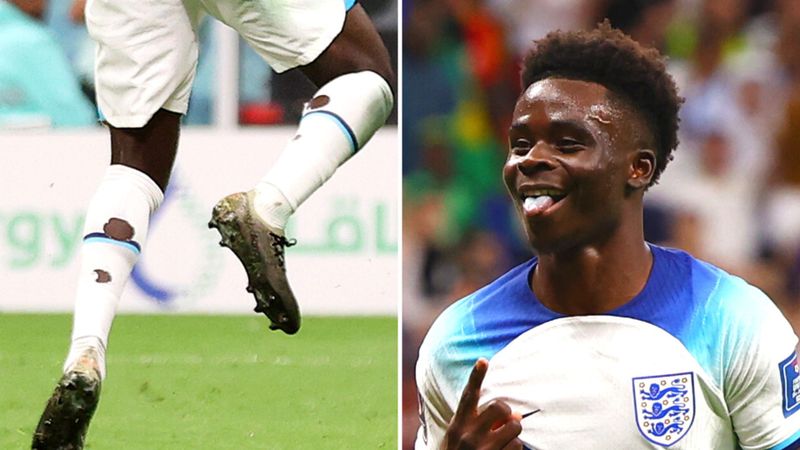
Bukayo Saka cut holes in his socks
Bukayo Saka, the rising star of English football, has caught the attention of fans not only with his skills but also with his unique sock modifications. Since breaking into the Arsenal first-team, Saka has been wearing footballers holes in socks. This practice has become a trend among players who are looking to reduce the chances of suffering calf injuries.
By cutting holes around the widest points of their calves, players aim to relieve pressure and prevent cramps and muscle tightness. Saka's choice of modified socks has become a superstition worth sticking with, especially after his remarkable performances on the international stage.
Kyle Walker

Kyle Walker cut holes in his socks
Kyle Walker, an experienced English defender, has also been spotted with sock modifications similar to those of Bukayo Saka. It seems that Walker, like Saka, is keen on reducing the risk of calf injuries and believes that cutting holes in the back of his socks provides relief and improves circulation.
Danny Rose

Danny Rose cut holes in his socks
Danny Rose, another English footballer known for his time at Tottenham Hotspur, has been seen wearing football socks with holes as well. Rose, like his fellow players, understands the potential benefits of modified socks in reducing calf muscle issues during matches.
Jack Grealish
Jack Grealish, the Aston Villa and England midfielder, is known for his distinctive style both on and off the pitch. Grealish has embraced the low-sock look, rolling his socks down to his ankles. This style choice has become a signature for him, allowing him to move more freely on the field without feeling restricted
Grealish's low socks and tiny shin pads have become influential in his playing style, representing his unique approach to the game. His confidence and ability to stand out have made Grealish a true fashion icon among footballers.
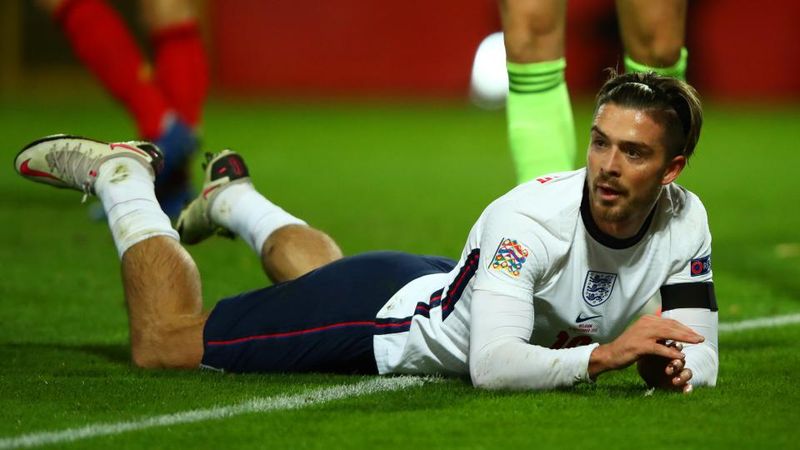
Jack Grealish embraced the low-sock look, rolling his socks down to his ankles
Famous footballers like Bukayo Saka, Kyle Walker, Danny Rose, Ezequiel Garay, and Jack Grealish have all embraced sock modifications for different reasons. From reducing the risk of calf injuries to expressing personal style, these modifications have become part of their on-field identities. As fans, we can appreciate the creativity and individuality these players bring to the game, both in their skills and their fashion choices.
Besides following players, there are various other players have cut holes in their socks in the past, including Neymar, Angelino, and Gareth Bale.
Controversies and Criticisms
In the world of football, players are known for their unique styles and personal preferences both on and off the field. One aspect that has sparked controversy and criticism is the modification of sock length by footballers. This practice involves cutting football holes in socks or wearing them either longer or shorter than the traditional length. While some embrace this trend as a form of self-expression, it has faced opposition from coaches, managers, and team officials.
Opposition to the Practice of Cutting Holes in Socks
Football coaches, managers, and team officials have expressed opposition to the practice of cutting football holes in socks. They argue that it undermines the professionalism and uniformity of the team's appearance. The traditional sock length, which extends just below the knee, is seen as a symbol of tradition and unity among players. Coaches and team officials often emphasize the importance of maintaining a cohesive team image to foster a sense of belonging and discipline.
Jose Mourinho has expressed his disapproval of footballers who deliberately puncture holes in their match socks through an unexpected Instagram post. The esteemed AS Roma head coach, widely recognized as one of the most influential managers in football history, shared five monochromatic photographs featuring unidentified players wearing torn socks.

Jose Mourinho has expressed his disapproval with cutitng holes in socks of players
Mourinho, frustrated with the lack of intervention from football's governing bodies to curtail this emerging trend, commented, "Exquisite socks for the beautiful game... Sanctioned by the football authorities.". His status seems to show that he can not understand why do footballers cut holes in their socks
Opponents of sock modifications argue that it can create distractions within the team. Instead of focusing solely on their performance, players who engage in this practice draw attention to their unconventional attire. Critics contend that football is a team sport where individuality should be expressed through skills and teamwork, rather than personal fashion choices.
Arguments against Potential Disadvantages or Negative Consequences
Another aspect of the controversy surrounding footballers holes in socks revolves around the potential disadvantages and negative consequences. Critics argue that cutting holes in socks compromises their functionality and the protection they provide. Socks are designed to provide support, compression, and warmth to the lower leg muscles. By altering their structure, players may risk reduced muscle support and increased vulnerability to injuries.
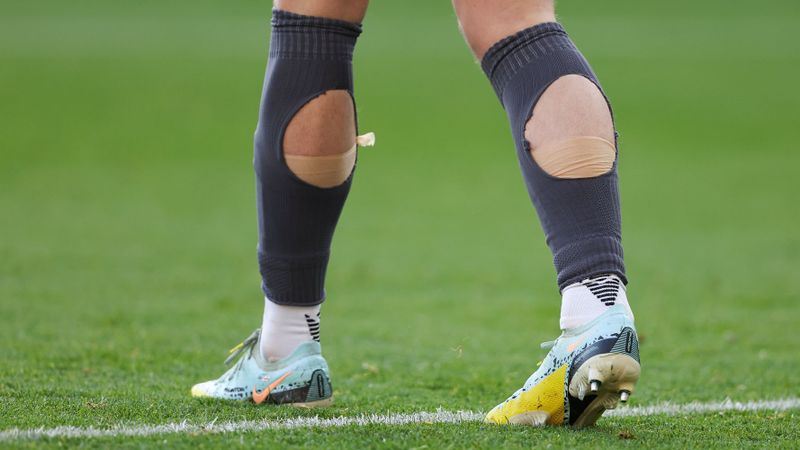
Cutting holes in socks compromises their functionality and the protection they provide
Moreover, opponents claim that cutting holes in socks can impede blood circulation. The form-fitting nature of football socks is intended to maintain adequate blood flow and prevent muscle fatigue. Altering the sock structure may restrict circulation, leading to cramping or muscle tightness during matches. Detractors argue that footballers should prioritize their physical well-being and adhere to established uniform standards rather than seeking personal comfort at the expense of potential risks.
Counterarguments and Defense of Players' Autonomy
Despite the opposition and criticisms, defenders of footballers' sock modifications highlight the importance of players' autonomy and self-expression. They argue that personalizing their attire, including sock length, allows players to showcase their individuality and unique style. Customization of socks is seen as a way for players to differentiate themselves, express their personality, and potentially connect with fans on a more personal level.
Advocates of sock modifications also stress that players' performance and comfort should not be compromised. By cutting football holes in socks, players aim to reduce the pressure and tightness around their calves. This practice is believed to alleviate muscle tension, enhance blood circulation, and potentially prevent cramping. Proponents argue that players should have the freedom to make choices that optimize their physical well-being while maintaining their performance on the field.

Footballers' sock modifications highlight the importance of players' autonomy and self-expression
The controversies and criticisms surrounding footballers' sock modifications reflect the clash between traditional standards and individual self-expression in the sport. While opponents argue against the practice, citing concerns about professionalism and team unity, defenders emphasize players' autonomy and the potential benefits of customization. As football evolves and new trends emerge, it is essential to strike a balance between preserving tradition and allowing players to express themselves within reasonable.
Players cutting football holes in their socks may seem like an odd habit, but it serves a practical purpose. The tight, form-fitting nature of football socks, predominantly made of nylon, can restrict circulation around the calves, leading to cramps and muscle tightness. By cutting holes in the widest points of their calves, players aim to alleviate this pressure and reduce the risk of calf injuries. The theory behind this practice suggests that the holes allow for better blood flow and circulation, enhancing comfort and potentially improving performance on the field.
While practicality plays a significant role in the decision to cut football holes in socks, the practice is not limited to a single reason. Footballers may also engage in this habit due to personal beliefs or superstitions. Some players consider it a lucky charm or a ritual that brings them good fortune during matches. These personal beliefs intertwine with the practical aspect, creating a unique blend of tradition and functionality within the football world.
The act of cutting holes in socks may seem like a minor detail, but it holds significance in the football world. From a performance perspective, it serves as a means for players to mitigate potential calf injuries and discomfort, allowing them to focus on their game [3]. This practice highlights the dedication and attention to detail that professional footballers bring to their preparation and well-being.
Moreover, sock modifications have become a part of football culture, often observed in tournaments like the World Cup. Fans take notice of these fashion choices and the potential impact they might have on player performance. The sight of footballers with holey socks on the field has become a symbol of dedication, superstition, and individuality within the sport.
FAQs - Why do footballers cut holes in their socks?
- No, not all footballers engage in the practice of cutting holes in their socks. It is a personal choice influenced by various factors, as discussed in the article.
- The impact on performance varies from player to player. While some believe it enhances their performance, others may find it has no significant effect. It ultimately depends on individual perception and preference.
- As long as the modifications to the socks do not violate specific regulations set by governing bodies, such as excessive alterations or safety concerns, players are generally allowed to cut holes in their socks.
- Some sports apparel brands may offer football socks with pre-cut holes, catering to fans who wish to replicate the style of their favorite players. These socks are often marketed as replicas or fan merchandise.
- Yes, sock-cutting practices can vary across different football cultures, reflecting regional traditions, superstitions, and individual preferences within the sport.
- No, football socks are available in various sizes to accommodate different foot sizes. They typically come in small, medium, and large sizes to ensure a proper fit for players.
- Professional footballers often wear socks provided by their team's official kit supplier. These socks are typically designed to match the team's kit and may feature specific branding or technology endorsed by the supplier.
- Football socks should be replaced regularly to maintain their quality and functionality. It is recommended to replace them every season or whenever signs of wear and tear, such as holes or stretched elastic, become apparent.
- By cutting holes in the back of their socks, players aim to alleviate pressure and improve blood circulation, reducing the chances of experiencing cramps and muscle tightness.

Related Content

